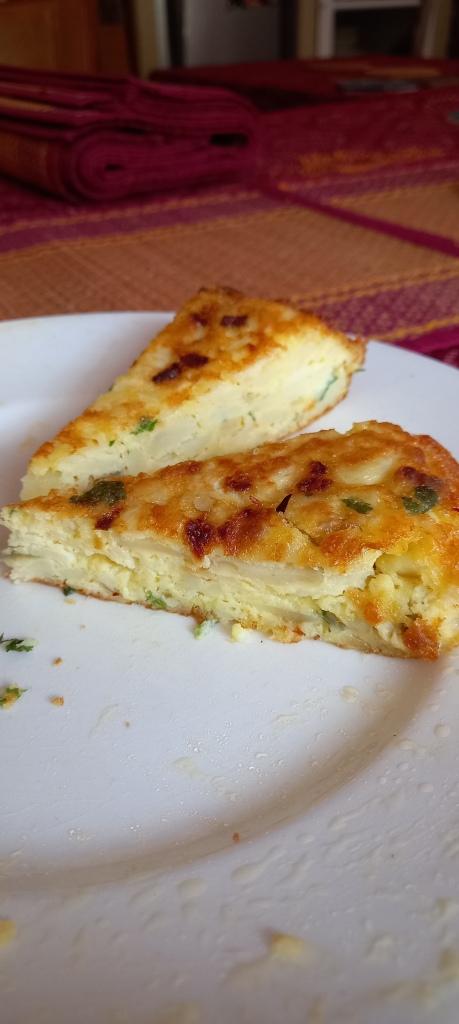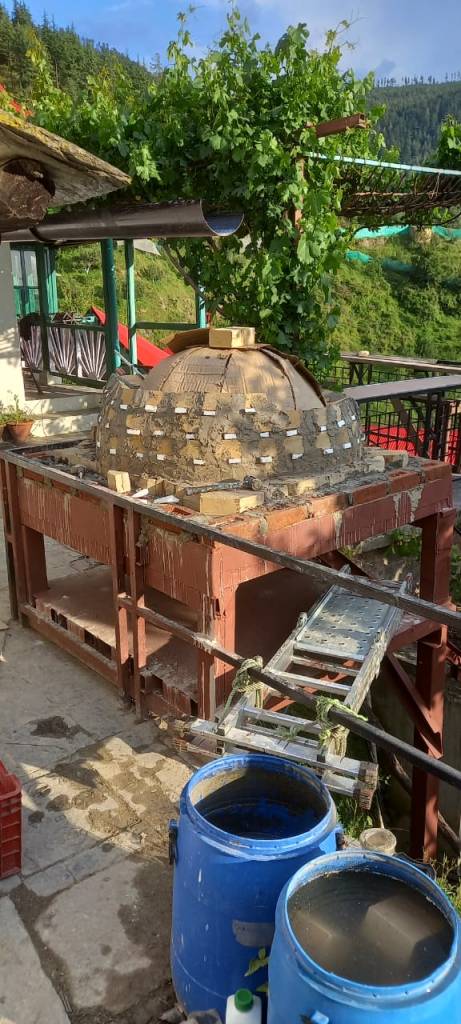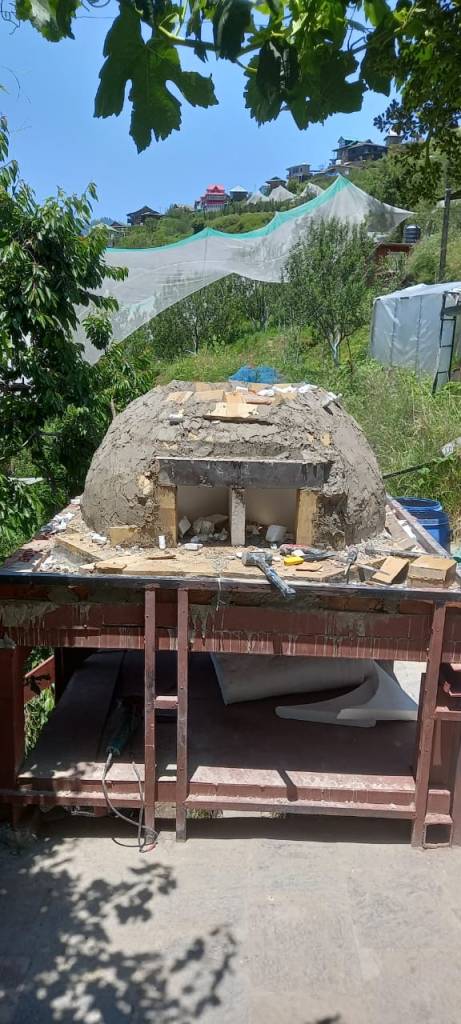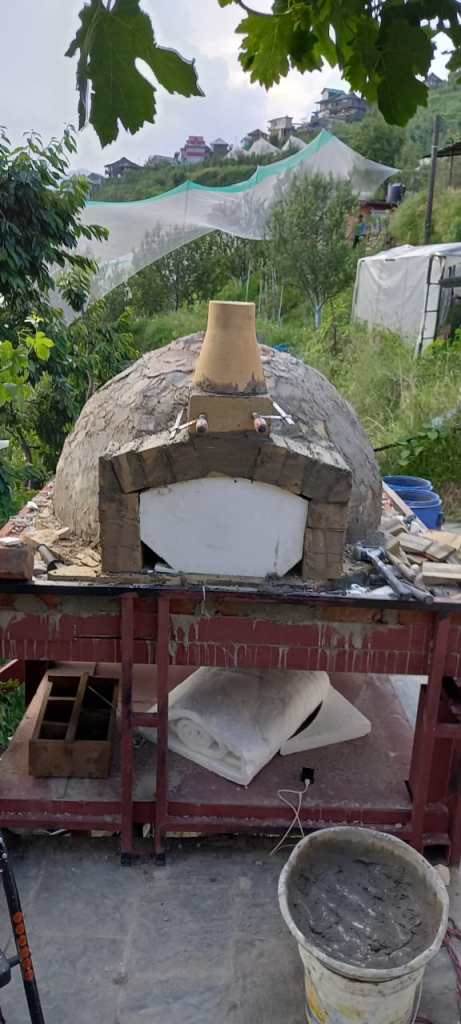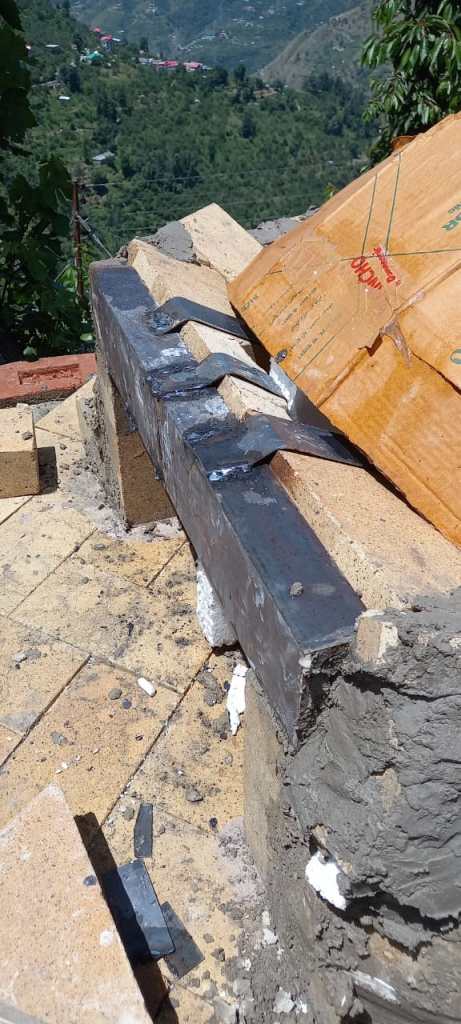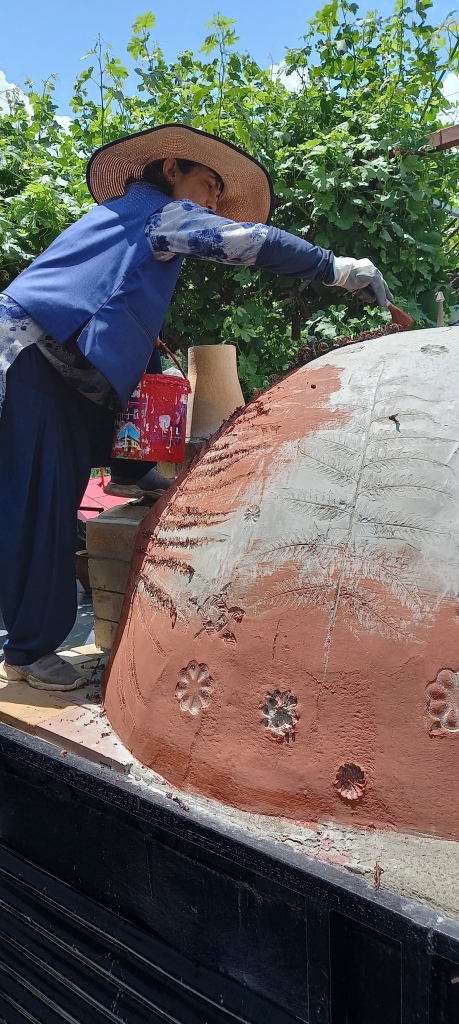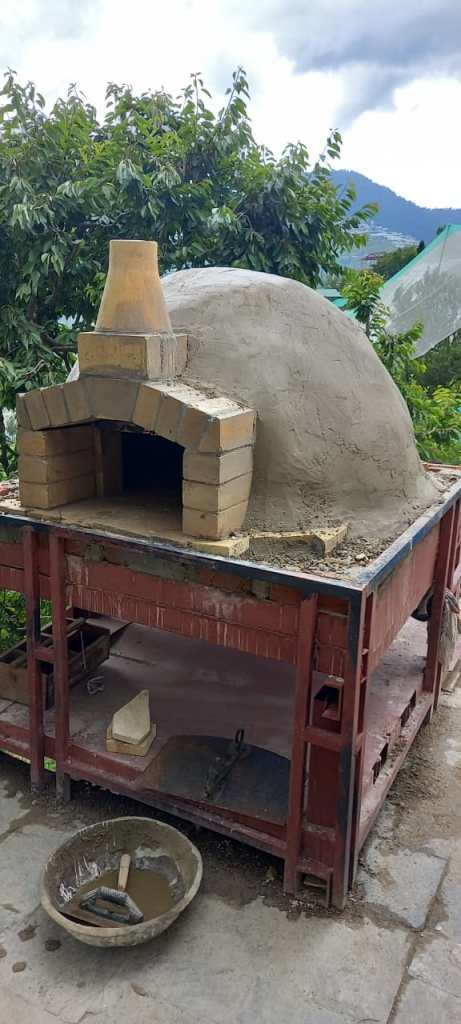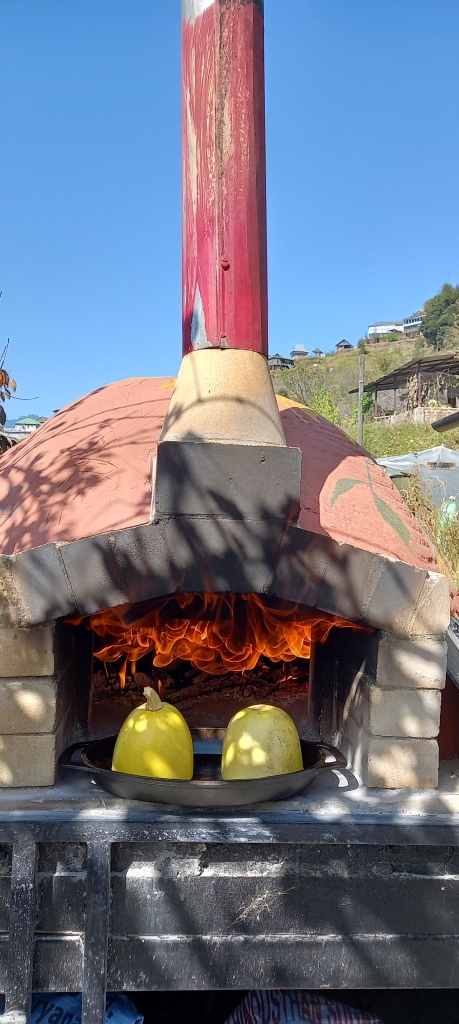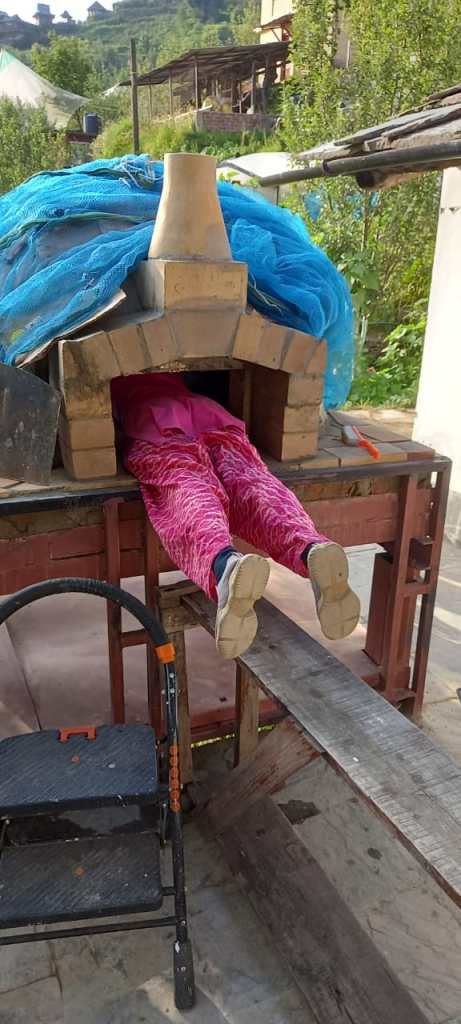William and James camped that night at the village of Dhar overlooking the Pabbar river, on which remained the last Gurkha-occupied fortress in the western arena of the war: The Fort of Raeengurh [Rawingarh]. Inside were an estimated 160 Gurkhas commanded by Runsoor Thappa. Letters were sent to Runsoor Thappa pointing out that his Commander-in-Chief, Amar Singh Thappa, was on the point of surrender at Malown, the terms of which capitulation would include his son, Ranjore Singh Thappa, leaving Jaithak, and Kirti Rana had already been defeated at Sararu by the combined forces of Bushahr and Kullu. These troops were now besieging Rawingarh along with the whole force of Jubbal. The fact that these three hill states had until the Gurkha invasion been regularly at war with each other is an example of how communities can be obliged to band together in the face of a common enemy, despite generations of feuds and internecine rivalry.
Runsoor Thappa replied post-haste that firstly, he had provisions for two months; secondly, he had eaten the Gurkha salt and could therefore not return to Nepal; and thirdly, with an acute eye to his next position:
‘He concluded by observing, somewhat shrewdly, that, if to them he should thus prove faithless, we could place little dependence on the fidelity of his services in any future employment.’
The British had a second go, however, as ‘it was inconvenient to leave this strong place in our rear’, and pointed out that should he surrender now then he would be ‘treated with kindness’ by them, whereas if ‘he should persist in fruitless and unnecessary opposition’ then who knows what merciless treatment he and his men would receive from the vengeful troops of the states they had so recently and brutally subjugated.
While the Gurkha commander mulled this over, the following morning the brothers received a visit from Rana Padam Chand’s grandfather, Rana Puran Chand (1772 – 1843), who failed to make much of an impression:
‘May 17: The Rana of Joobul paid us a visit this morning. He came attended by a considerable concourse of his subjects. He was a thin and sickly looking young man, about twenty-five years of age [he was actually 42]; his complexion pale and yellow, his features meagre and prominent, his eyes large, protuberant, and bloodshot, the lids tinged with antimony. His dress was Hindoo, plain white, with cross-striped silk trowsers. The fashion of his turban somewhat resembled that of the Sikhs. He wore a cotton cloth, of no very considerable fineness, thrown round his shoulders and head. His presence had nothing in the least commanding, and his whole appearance put me much in mind of a poor Calcutta shop-keeper…’
Perhaps because he didn’t appear capable of saying boo to a goose, but more likely because he co-operated with the British in kicking out the Gurkhas, later that year Jubbal was upgraded from being a tributary of Sirmour (which it had been for centuries) to being an independent state. The Rana was also eventually promoted to Raja. Jubbal, however, never rose to the dizzy heights of warranting a gun salute, unlike Sirmour, who had earned eleven.
Not having got very far with the Rana of Jubbal, the brothers moved down to Rawingarh where they camped on the banks of the river Pabbar and almost in the shadow of the fortress, which the Gurkhas had surrounded with a stockade. Here they met a wazir [chief officer] of Jubbal, called Dangee:
‘In truth he is a far better-looking subject for a chief, than the miserable creature who claims that distinction. He was a fine-looking, large, and stout man…’
Dangee and the wazir of Bushahr (Thiken Das) evidently meant business as James learned that they intended to:
‘… construct a machine, by the help of which, the fort would soon be compelled to surrender. On his describing this machine, we were not a little surprised to find, that it was almost exactly similar to the catapulta of the Romans for projecting large stones.’
Having described it in detail, he goes on:
‘It is surely very extraordinary, to find in so remote and savage a country, among a people who could scarcely have had intercourse of such a nature with enlightened nations, as to learn their arts of war, the knowledge of so very complicated an apparatus, so closely resembling one of those machines used by nations the most expert in those arts before the invention of modern artillery.’
Satisfied that the fort was about to be reduced by the combined forces of the wazirs of Jubbal, Kullu and Bushahr, William and James decided it was safe to move on and tour through the various hill states that had already or were about to become ‘British’. Before they left, however, they took the opportunity to examine a temple complex ‘of great sanctity’ in a walled and gated enclosure now known as Hatkoti, the main two temples of which would later be re-roofed by the grandson of the ‘sickly and miserable looking’ Rana Padam Chand, in 1885.
‘Under a large spreading walnut tree in this inclosure, we had our tent placed, not interfering with any spot that could be polluted by this measure. This inclosure might be twenty to thirty yards square, paved with slate, and surrounded by a dry wall: it contains two temples of unequal size, besides a number of small shrines or pagodas from eight to ten feet high. The temples are curious but somewhat mean, built of dry stone, painted in some parts red and brown. They have the Chinese large overhanging roof slated, and, elevated above them, a large round canopy of wood; the cornices are ornamented with a fringe of wooden bobbins [gududu, khururu]; wooden bells [ghanti] are hung at each corner, and there is a good deal of carved work about them.’
The fringe of wooden bobbins are designed to rattle and clunk against each other when the wind blows, sounding something like a Himalayan xylophone. Both shrines face east and are believed to have been either built on the earlier foundations of Buddhist temples (sangharama) sometime between the 6th and 9th centuries, or the main one may have simply been converted during the Hindu revivalist movement of Shri Adi Shankaracharya (c. 788 – c. 820 C.E.) from being dedicated to the wrathful female Tantric Buddhist deity, Vajravarahi, to the equally irate Hindu vanquisher of demons, Hateshwari Mata. Outside her temple is the original ornately-carved shikhara-style pinnacle of the roof before the Rana of Jubbal not only replaced the roofs but also encased the stone temples in kath-kuni style wood-and-stone walls. There is also a large copper vessel or cauldron chained to a ring in the wall. Apparently there used to be two such vessels but one floated away in a flood.
5. The Fort of Raeengurh [Himala Aquatint No. 9] May 17th, 1815.
The concrete structure by the river is a small part of the Sawra-Kuddu Hydro Power Project, inaugurated in 2021 – ‘the first such dam in Asia in the shape of a piano’, according to the official press release.
When we visited the complex, it was snowing and a coach-load of shivering and shoeless, yet still cheerful school-children were lined up tightly together, waiting their turn to circumambulate and pay their respects to the goddess in her inner sanctum (mulaprasada). Among the iconography within are representations of the river goddesses of both the Yamuna and the Ganga (Ganges), the sacred sources of which James will soon reach.
A new dharamsala (guesthouse / meeting room) was under construction in the traditional style, with slate roofs, ornately-carved wooden beams and panels, and hand-chiselled stonework. The traditional temple wood carvers observe certain taboos:
‘It is essential for the craftsman that he should not shave and cut hair, take food only once in a day, sleep on the floor and abstain cohabiting with a woman during the period he is on the sacred job.‘[1]
On May 18th , 1815:
‘a formal refusal to surrender was received from Runsoor Thappa [within the fort], and what are called active operations recommenced; and the fort was ordered to be invested.’
Leaving these operations to the local forces, the brothers decided to head further into the interior towards the state of Bushahr on the Tibet border, in order to assess ‘those regions now fallen, or likely to fall into the British power’. With Hatkoti and the fort at Rawingarh behind them, their route took them up the wide, glacier-fed, trout-rich Pabbar river valley towards Rohru, then up the steeper valley of a tributary called the Nawur. James waxed lyrical about the beauty of these valleys:
‘Anxious to obtain an uninterrupted view of the snowy mountains, at a time when they should be free from the clouds and the vapours of noon, I ascended the ridge that rose behind Kareshee [Karasa], and from this crest enjoyed a glorious sight. The sun was just rising, in a cloudless sky, vividly lighting up the glittering snowy peaks that bounded the distance, and spread their rough inferior ranges down to the highest on which I now stood. The whole glen of Pabur lay before me, dividing the mountains by a deep and tolerably broad, well-cultivated valley, through which the river flows, meandering in many bright curves; every variety of brown hills and rocks, villages, cultivation, and wood, gave their attractions to the landscape, heightened by the dewy freshness of the morning.’
He was less enthusiastic about the inhabitants, however, who, according to him:
‘…lie … under the stigma of abandoned villainy, and total want of good principles … They are generally unpleasing in appearance, mean, grovelling, cowardly, and cruel. It would seem as if the faint approaches they have made towards civilisation had only awakened the evil passions and propensities of the mind, which yet remain quite uncontrolled by and ignorant of the restraints of religion and virtue. They do not possess the almost admirable qualities that are attributed to the wild, stern native of North America, or the mild inoffensive submission of the southern savage. They have lost whatever native virtue may have existed in the savage state, and have not acquired that which would probably result from a happy, free, and liberal intercourse with civilised beings.’
James, like many of his contemporaries, was in no doubt that these ‘civilised beings’ were the British, who had come to rescue the ‘savages’ from themselves:
‘It is painful to observe this disgusting state of a people, who (it is fair to presume) are yet capable of improvement, and may be raised from so degraded a condition. We may hope that the dawn of their political and moral regeneration is even now appearing. They have been rescued by British power from the tyranny under which they groaned; and the spell which, as it were, lay on their mountains is broken. Security of person and property will be guaranteed by the British government, and with this security riches will increase; industry, of which there is no want, will flourish; and the vicious habits will be checked … amelioration, though gradual, will take place, and benevolent and wise interference will ultimately be successful. These effects, indeed, are regarded, by the most intelligent of the natives themselves, as necessary consequences of late events. They hail the success and coming of the British as a revolution in the world, as the dawn of their civil happiness. The people think they will become good, free, and happy, as by inspiration; that it is the necessary result of British power and government. A British officer is looked upon almost as a supernatural being. From the rajah to the peasant there was not one who did not talk thus with confidence and enthusiasm, and uniformly concluded with saying, ‘Now we shall live, and improve, and be raised from beasts to men.’ Such are the ideas, such the veneration entertained by these rude savages for the British name; and it is a proud and exulting feeling for a British subject to trace them so strongly in so remote a clime. It is no wonder if his heart swell with love for his country, and his zeal and devotion be more firmly bound to its glory.’
From the top of the Nawur valley, buoyed by patriotic fervour, they made their way along the Nowagarh ridge and camped near the fort at Baghi. This ridge forms part of the watershed of India: the rain falling to the south and east ends up via the Ganges in the Bay of Bengal, while that falling to the north and west eventually arrives via the Sutlej and Indus in the Arabian Sea. Baghi fort, ‘a wretched place’ of ‘miserable construction’, has not survived, but there is a British era Forest Rest House, in which we stayed. Starting in the 1850s the British built a series of such Rest Houses or bungalows, separated by a day’s march (ie. walk) along various routes. These routes were improved to form bridle-paths wide enough for two horses to pass each other, and many were later broadened to take carts, carriages and eventually motor cars. Baghi Rest House lies on the old or upper part of the Hindustan-Tibet Road, a road which started being widened, re-routed and levelled in the 1850s. The lower part, which drops down from Narkanda (a few miles before Baghi) to the floor of the Sutlej valley is still very much a work in progress as it now forms an important part of the strategic NH5 – a primary national highway which runs across the north of India from the Pakistan to the Chinese (Tibet) borders, starting in Firozpur (south of Lahore) and ending at the inaccessible army post at Shipki La, from where the Indian soldiers there can gaze into Tibet and follow the Sutlej river on its way to the sacred Mount Kailash. The Rest Houses were eventually taken over by the Forest Department or the Public Works Department (PWD) after Independence, and most have been maintained up to a certain minimal standard. The more isolated ones tend not to be open to passing visitors while in theory being available if booked in advance provided you know who to contact. As the Rest House at Baghi is at the top of our valley, we had passed by and ‘booked’ a room with the chokidar – a curious looking old man whose outfit reminded one of the children’s game Picture Consequences, whereby cards are turned over to build up a combined image of, for example, the crowned head of a smiling queen, the torso of 1970s Glam-rock star, and the legs and flippers of a frogman, except in his case he wore a pink woolly girl’s balaclava under a NYC baseball cap, a somewhat threadbare khadi[2] brown checked jacket, navy blue striped jogging pants, finished off with asymmetrical holey woollen socks and plastic bathroom slippers.
‘No problem!’ he smiled through a toothless grin. ‘Nobody ever stays here – trust me!’
I have learned over the years never to rely on such assurances, and so it was that when we arrived at the Rest House, an expensive carful of nonplussed and evidently disgruntled VIPs, who had perhaps been expecting something more grand on the historic Hindustan-Tibet Road, had made it before us and were strolling around the litter-strewn patch of ground that a century ago may have resembled an English country rose garden. As it was getting dark, we pleaded with Head-Body-Leg man, who grudgingly showed us into the (recently renovated) ensuite back room, but told us that we’d have to go out to a dhaba for dinner. The bathroom had new fittings, some still wrapped in plastic, and a new corrugated iron roof. Job descriptions are very much a thing in this part of India, and so somebody responsible for plumbing wouldn’t touch, for example, anything that might be classified as woodwork, and so on. In the case of this bathroom, the roofers would have had nothing to do with ensuring that the wall went up to meet it, such that there was a large airy gap all round the top, ideal as a roost for local pigeons. Laundry workers are notable by their complete absence in the Baghi area, as it took us a while to decide which edge of the bedcover was the least filthy, and the thought of taking any of our clothes off was immediately dismissed without further inspection within. Since this incident, we always travel with clean sleeping bags.
The dinner dhaba in the main Baghi bazaar was memorable for having a nautical quality – a very low ceiling and a floor built on a one-in-five gradient, presumably to make clearing out easier at the end of the evening. In the morning, we woke before the other occupants and headed off towards Hatu Peak, very quickly finding a far more salubrious roadside establishment whose fresh parathas[3] were so good we took a few more, rolled up in foil, for lunch, along with a fresh thermos of chai. As so often happens in these parts, where gore outsiders are such a rarity, the customer on the next table wanted to know where we were coming from and where we were going to – the classic opening questions, even between locals.
We were walking on this occasion, rather than driving, and had just got to the point where the road occupies the width of the ridge completely, with no room for cars to pass, when a car pulled up and the driver proceeded cheerfully to grill us through his open window with a lengthy stream of personal questions regarding not only our origins and immediate destination, but our marital status, numbers of offspring, names of relations, and so on. Not only that, but he carefully noted our answers on a notepad, checking for spelling, and all the time oblivious to the queues of cars gradually building up in front of and behind his. On learning that I was from England, he then told us all about what his daughter was doing in Doncaster, and how long she had been so occupied, and her family situation, in a manner that suggested that one of us might have bumped into her at some point or might consider arranging a liaison of some description in the near future. As it was still only 7.30, we hadn’t slept particularly well having been woken up in the small hours by the annual general meeting of North Indian pot clangers in the temple next door, we had a long day’s trek ahead of us, the honking from the other would-be road users was becoming increasingly insistent, and anyway I had long since lost what little interest I may have had in any member of the driver’s family, regardless of their current whereabouts, I eventually walked off leaving Devanshe to supply any missing essential details from my admittedly non-conformist curriculum vitae.
Given that we were literally walking in the footsteps of the Fraser brothers, we soon asked for directions as to the most direct path to the peak and were told that there wasn’t a marked path as such but if we followed the ridge straight up through the forest then we couldn’t go wrong. After walking about a kilometre along the main road towards Narkanda as far as a kutcha[4] road to the left, we were looking around for the right way when a voice called out from above, in broken English, “I am here for four months for making this temple by myself!” Up on a high bank above the road, sitting cross-legged, and looking like the silent hermit in Life of Brian, was a long-white-bearded, semi-naked man of indeterminate age, hands together, eyes shut, saluting us with a clearly heartfelt namaste, in front of a makeshift tent made out of a plastic sheet. “Would you like cup of tea?” To be honest, I was torn, but instead, in broken Hindi, asked him the way up to Hatu. In very fluent Hindi his reply included the direction that we should go straight up the ridge in front of us, under the electricity pylon. We thanked him very much, received another deep namaste, and headed off, eventually in the right direction after some more distant shouting and arm waving.
Although the start was unclear, it soon became a good path through mature high canopy forest, primarily the evergreen oak known locally as ban[5]. Finally we were on our own, taking deep lungfuls of fresh arboreal Himalayan air. There are many paths and trails criss-crossing the forests in this area, although it is noticeable how over the last ten years or so, they are used less and less, and one very rarely bumps into anyone. From April to September it’s possible to come across the ‘nomads’ – more accurately, transhumant pastoralists – known as the Gujjars, who walk up here from the edge of the plains with their large herds of buffalo, cattle, horses and goats. The same families follow the same routes and stay in the same clearings in the forest that they have been occupying since time immemorial. They have very few possessions, and make what James would have called ‘rude’ simple dwellings by splitting tree trunks as rough planks, which are stood upright to form the walls, then plastered with mud, and a swept mud floor, and chulha (fireplace/stove). We have got to know our local Gujjars and often buy buffalo milk from them during the season. The transaction involves sitting huddled round the chulha, with a gaggle of permanently unwashed, semi-clad, delightfully giggling bashful kids, sipping hot sweet and slightly smokey buffalo milk from stainless steel ‘glasses’. As they are so poor, they rarely leave much behind them in terms of rubbish when they leave. A sign that a forest path is regularly used, for example, by children on their way to school, is the amount of sweet wrappers and crisp packets littering the trail. Our trail up to Hatu peak was pristine and a sure sign that it was very rarely used, at least by humans these days. It was something of a surprise, therefore, to come across what at first sight looked very much like a bare human footprint in the mud. A close inspection revealed that it (and others around it) was very fresh and belonged to a bear, whom we were inadvertently following. This was soon confirmed by a distinctive pile of steaming fresh bear poo – distinctive as it looks something like a very loose fruit pudding, in this case with plenty of embedded apple pips. It seemed highly likely that this bear, or group of bears, had been down to Baghi during the night to scoop up some of the discarded apples and other fruit and veg past its sell-by date. The bears at this altitude (2000 – 3000 metres) are the Asiatic Black Bears[6], also romantically known as Moon Bears on account of the crescent-shaped white mark on their otherwise black chests. Their hind paw print, as mentioned, is not dissimilar to a human’s, while the fore paw print usually lacks the heel mark, as they tend to walk with more weight at the rear end, using their forelegs to forage as they go along. They are said to be able to walk upright for minutes at a time, and another clear sign that they have been around are large stones flipped over in their search for ant eggs, their larvae and other invertebrates. While they don’t hunt and eat meat as such, they will attack and even kill if they feel threatened. Especially dangerous, as is the case with many wild animals, are mothers with cubs. A tragic example of this happened a couple of years ago in this area when an early morning jogger managed to get between such a family group and understandably kept running, thus triggering even further the bear’s instinct to chase. She took a great swipe at him, inflicting an injury from which he did not recover. The same bears are found in Japan, a country of enthusiastic trekkers, usually in well-organised groups, with very clearly laid out and well-signposted trails, lodges, campsites and maps. Even so, there have been isolated cases of fatalities, and so the standard Japanese trekker carries a small dingling bell tied to the back of their rucksack in order to let the bears know they are coming, and the bears will move off into the undergrowth before you get a chance to see them. Coming from Britain, a country with no large predators, I used to find this bell-dingling a tad annoying – surely, I thought, part of the pleasure of hiking through the wilderness is to have the rare chance of spotting wildlife, rather than scaring it away? Now, in this deep dark wood, far from human habitation, on a rarely frequented path, surrounded by hidden bears, I finally got the point. It was on these very slopes of Hatu peak that a few decades after the Fraser brothers trailed the way, ‘sportsmen’ from Shimla would come with their shikaris (bearers / hunting assistants) to ‘bag’ these very beasts’ forebears. Could they have a folk memory? Might they want revenge?
In the absence of a handy bell, I decided to make some noises sufficiently audible to warn them of our approach, especially as we neared the sort of rocky outcrops forming the kind of caves within which a bear might choose to while away the daylight hours digesting his, or her, nocturnal input. I suddenly developed a loud cough, and the urge to sing, appropriately perhaps, The Teddy Bears’ Picnic, among other half-remembered tunes, including 1970s advertising slogans. This evidently did the trick as we subsequently neither saw nor heard anything ursine, and finally emerged from the forest into a large bear-free clearing in the centre of which was a large flat-topped boulder. Having established that we were truly alone, we clambered up onto the boulder to discover several ancient petroglyphs carved into the surface, along with a cylindrical hole about 20 cms in diameter and 20 cms deep. Along with a couple of diamond shapes, there were several rounded rectangles with a dividing line down the middle, roughly 30 cms by 20 cms. I sent some photos to a university in Delhi and have since been told that they are most likely prehistoric vulva fertility symbols, examples of which are to be found all over the globe. The cylindrical hole could have been used for pounding grain as part of a propitiatory fertility ceremony. We have come across a very similar hole in a large flat rock further down the valley, yet although both appear to have been deliberately hand-made, neither of them seem to be of a size or in a location suggesting that they had purely practical uses. James doesn’t mention them, although he does describe larger and hence more useful mortars carved from a large block of wood, the likes of which we have often seen in remote villages, evidently disused. He also later mentions, as they descend the other side, ‘a stone, sacred to some hill deity, of considerable eminence’.
Petroglyphs below Hatu peak.
We finally arrived at the peak around 4.30, hot, tired and sweaty, just at the point where a couple of dozen tourists, who had no doubt driven up, were taking selfies of each other taking selfies. Before we had even taken our rucksacks off and sat down, a youth approached us and asked “Where are you from?”, and I am afraid didn’t receive a fulsome reply. There is now a circuitous motorable road up from the NH5, much plied by tourist buses and cars on day trips from Shimla, and the new temple is so popular that the queue is managed by the sort of security maze that you see at the check-ins at international airports.
A small part of the view from Hatu.
The view makes it well worth the trip, and was described in 1847 by Thomas Thompson thus:
‘In every direction except south, and along the ridge to the east, the view from the top of Hattu is very extensive, as it overlooks all the peaks in the immediate vicinity. To the north the mountains of Kulu, which separate the valley of the Sutlej from that of the Beas, and from the upper Chenab, are most beautifully seen, their peaks rising above one another from west to east, till they enter the region of perpetual snow.’
James, more prosaically, noted:
‘Whartoo [Hatu] is the highest peak in the range … and on this was placed a considerable fort. Since Kirtee Rana’s troops left these parts, it has fallen to ruins; but even when in repair, it has been, like the rest, a wretched place. Two houses, or rather their remains, are yet in existence, which crown the two ends of the crest, and were surrounded and connected by a stockade, from each side of which the hill either falls perpendicularly, or at an angle that would make it nearly impracticable to storm it, against a determined defence.’
Thompson (a botanist) adds that 30 years later:
‘On the top of Hattu there are the remains of a square building, with very thick walls, I believe of native origin, and intended as a sort of fort, which, however, from the want of water, must have been quite untenable. It is now in ruins, its interior being filled with a wilderness of hemp, nettles, Galium Aparine [cleavers], dock and other coarse plants.’
A number of sources, however, refer to the ‘ancient’ Hatu Mata temple, dedicated variously to Mahakali (the ten-headed black goddess of time and death); Mandodari, the queen consort of Ravana, and according to the Hindu epic Ramayana ‘beautiful, pious, and righteous’, the recital of whose names is believed to dispel sin; and/or the goddess Hateshwari. It is also associated with the five Pandava brothers, who are often claimed to have been instrumental in a large number of ancient structures, both natural and man-made. There are at Hatu two large rock pillars, for example, known as bheem chulha, which are said to be where they cooked during their enforced exile (agyaat vaas). According to the ancient texts, the Pandava brothers had a father who had two wives, but as a result of a curse couldn’t have conjugal relations with either of them, and who were impregnated instead by five gods. In adulthood the (half) brothers had their own wives but also shared one called Draupadi, whom they lost, along with their wealth and freedom, in a dodgy dice game. Eventually all but one (Yudhishthira) died climbing Mount Kailash in Tibet – the source of the Indus, the Sutlej, the Brahmaputra, and the Karnali (a tributary of the Ganges). The mountain is considered sacred in four religions: Hinduism, Buddhism, Jainism and Bon. Other versions of the Pandava story say that Draupadi died or ascended to heaven at Hatu.
The current temple was finished around 2011. Devanshe remembers going there ten years earlier and seeing a small insignificant structure. It neither appears in the 2007 Himachal Government publication The Temples of Himachal, nor O C Handa’s 2001 academic tome Temple Architecture of the Western Himalaya. It seems likely, therefore, that there has been some kind of temple at Hatu for a long time, but at the beginning of the 19th century the Gurkhas built a fort there instead, which was then ruined, and at some point a smaller temple was rebuilt, which was recently developed into the large structure we see today. The first time we visited in 2016, there were still piles of wooden carvings, including a splendid pair of yellow spotted leopards, lying around the new temple, discarded from its previous incarnation. We asked whether we might help clear up by taking the leopards to a new home where they would be lovingly cared for, but received the usual curt dismissal – they were sacred objects, and must be burned.
As the Frasers made their way down from the peak, where they had lingered hoping for a break in the clouds, they:
;… received an express from General Ochterlony, acquainting us with the final surrender of Ummr Singh Thappa … by which he evacuated all the country from the Sutlej downwards… Thus was the campaign, which commenced so inauspiciously in this quarter, happily terminated, and they who had for sixty years continued a course of conquest and usurpation were shorn of half their honours and power[7].’
James again waxed lyrical about the landscape as they descended:
‘We held our way down a ridge, which sprang gradually from the gorge, and separated two valleys, each of which ran in a northern direction to the Sutlej. Great part of our path, as usual, lay through forests, and frequently sunk a little below the eastern side of the ridge: at one time, when we had proceeded thus, shrouded in darkness for some distance, and again emerged on the steep and bare face of the hill, our attention and admiration were arrested by a prospect of great singularity and grandeur, that suddenly burst on our view. The atmosphere was cleared of the haze which had loaded it. The storm had chiefly ceased; its thunders were only heard at a distance in the south-east; but heavy masses of clouds rested on the hills around, and black volumes were rolling overhead.’
‘It was nearly evening, and night itself had almost gone down on the dark glen of the Sutlej at our feet. The sun was sinking in the west, at the opening of a wild glen, which glowed with the fierce red light which it shed from a break in the clouds, and all the black masses above were tinged with fainter shades of the same. The hills of Cooloo [Kullu] opposite, tipped with fortresses, showed a rough bold outline; their western exposure was lighted up by the same fiery beam. To the east, the storm had passed away, and the sky had opened in the distance; and the snowy mountains rose above the white clouds that lay on their feet, calm and chill, and freshly strewed with snow; their highest summits just lighted up by the setting sun, not shining on them as on us, through vapour and cloud, but clear and bright to the last.’
‘Around us was a dark forest and on either hand a deep valley; it was a scene of so striking a nature, that I can never forget it; the effect of the stormy light of the setting sun on the wild and massy surrounding objects, opposed to the calm tranquil light of the snow on the other hand, formed an exquisite and extraordinary contrast.’
Not only had they lingered late on the peak, but their entourage had gone far ahead and set up camp on the other side of the valley, such that the brothers had to walk the last part in the dark:
‘… darkness soon obscured all, and we made good the last part of our way down a very stony path, by the forced guidance of a surly peasant, taken from one of the huts in our way, who would not stir to do us this good office, until a stick was smartly applied to his shoulders.’
They arrived at 8 pm and were met by the local Rana:
‘… and conducted to a house in which to pass the night, but it was a very dirty-looking wretched place, and we preferred occupying a tent which belonged to the Rana, and was pitched close by. It was commodious enough, and charpoys (oblong frames, resting on four feet, fitted with a sort of network of tape or twine, which serve as bedsteads and beds to the simple natives of Hindostan) and blankets were procured to sleep on; and after a supper of flour cakes and milk, we retired to no despicable bed, our weary limbs not requiring down to rest upon. Had we been fastidious, the look of our coverings would not perhaps have pleased us; but a little travelling in similar regions reconciles the traveller to greater privations, and to more disgusting objects than dirty or suspected blankets.’
[1] O C Handa (2001). Temple Architecture of the Western Himalaya.
[2]Strictly speaking, khadi refers to the homespun village cloth (khaddar) so revered and promoted by Gandhi – possibly derived from the pit (khud) in which the weaver, seated on the ground, would place his or her legs. Nowadays, its usage seems to be increasingly applied to other ‘locally-sourced’, ‘eco-friendly’ products.
[3] Unleavened layered flatbreads, usually stuffed with veg.
[4] Unmade-up dirt road.
[5] Quercus leucotrichophora
[6] Ursus thibetanus.
[7] ‘Half’ because the war continued on the eastern front.






